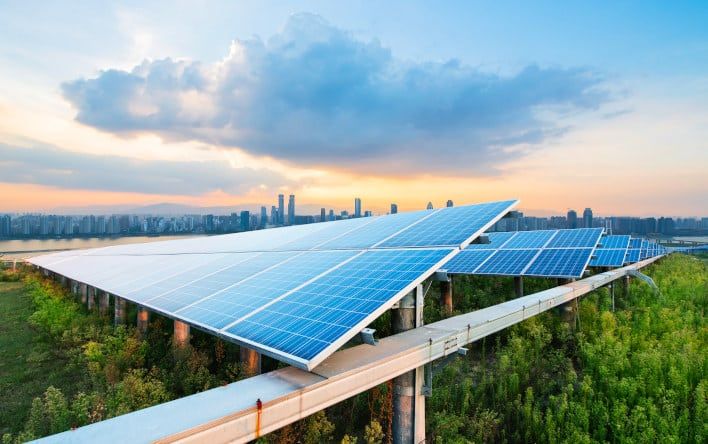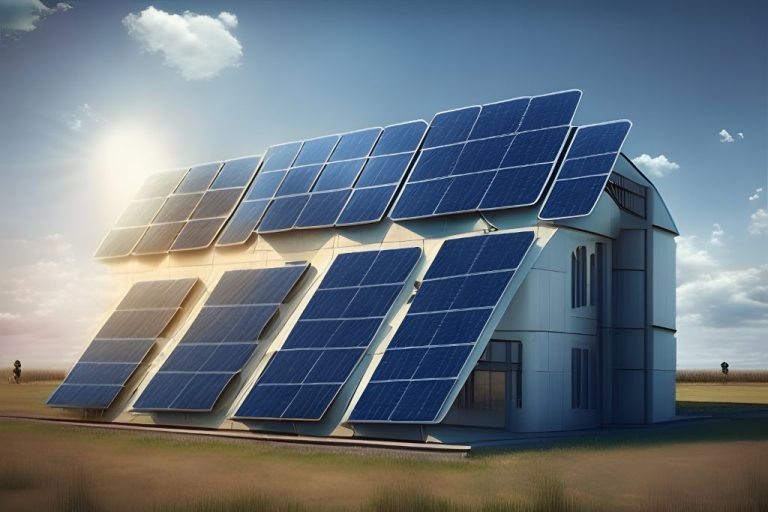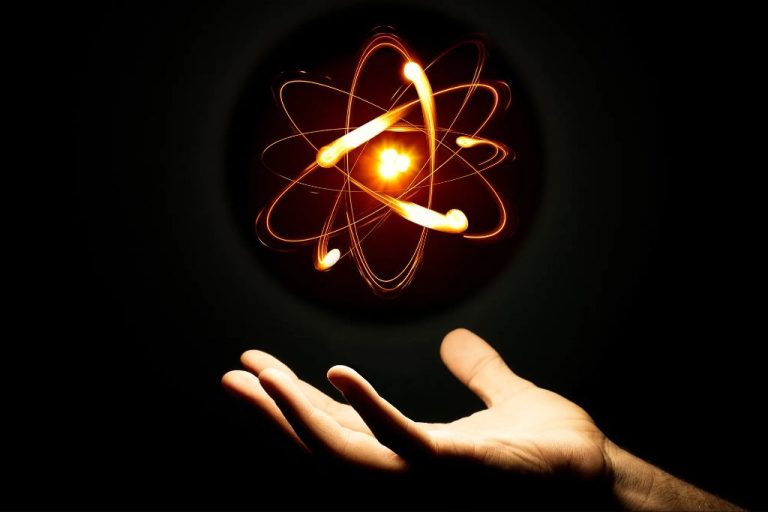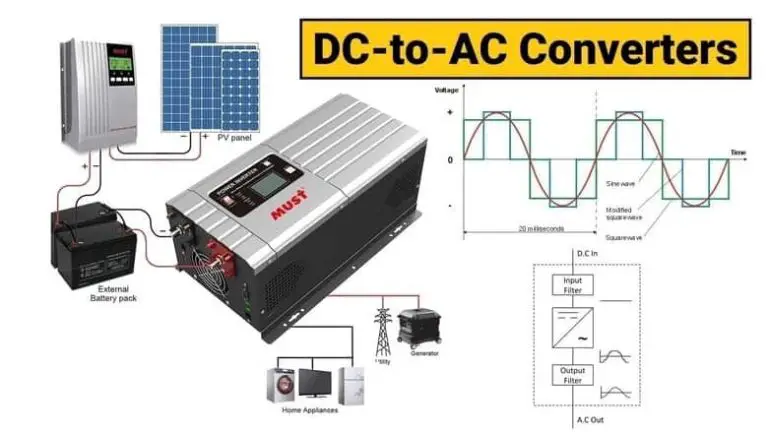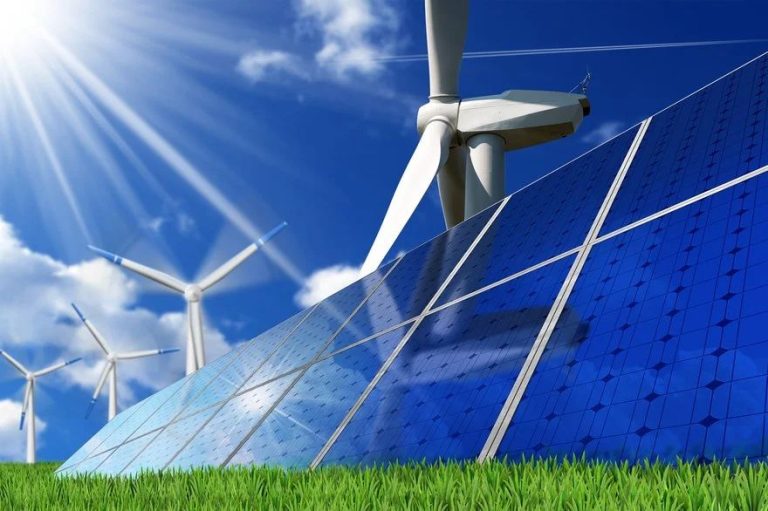Are Bifacial Solar Panels Better?
What are bifacial solar panels?
Bifacial solar panels are photovoltaic panels that can generate electricity from sunlight exposure on both the front and rear sides of the panel. This is in contrast to traditional monofacial panels that only have solar cells on one side, usually the front facing the sun.
Bifacial panels have solar cells on both sides of the panel, allowing them to collect sunlight reflected from the ground or surrounding surfaces. This dual-sided light absorption allows bifacial panels to produce more energy over the course of a day than a similarly sized monofacial panel in the same conditions. According to EnergySage, bifacial panels can generate up to 50% more power due to their dual-side capture capability.
Most bifacial panels use monocrystalline PERC solar cells, which are highly efficient at converting sunlight to electricity. The bifacial design allows these solar cells to capture albedo or reflected light from underneath, boosting power generation. Bifacial panels work best when installed above light colored, reflective surfaces like concrete, sand or snow.
Advantages of bifacial panels
The main advantage of bifacial solar panels is their ability to generate more energy compared to traditional monofacial panels. Bifacial panels can absorb sunlight on both the front and back sides, allowing them to harness up to 30% more energy according to this source. This results in higher efficiency and increased energy production.
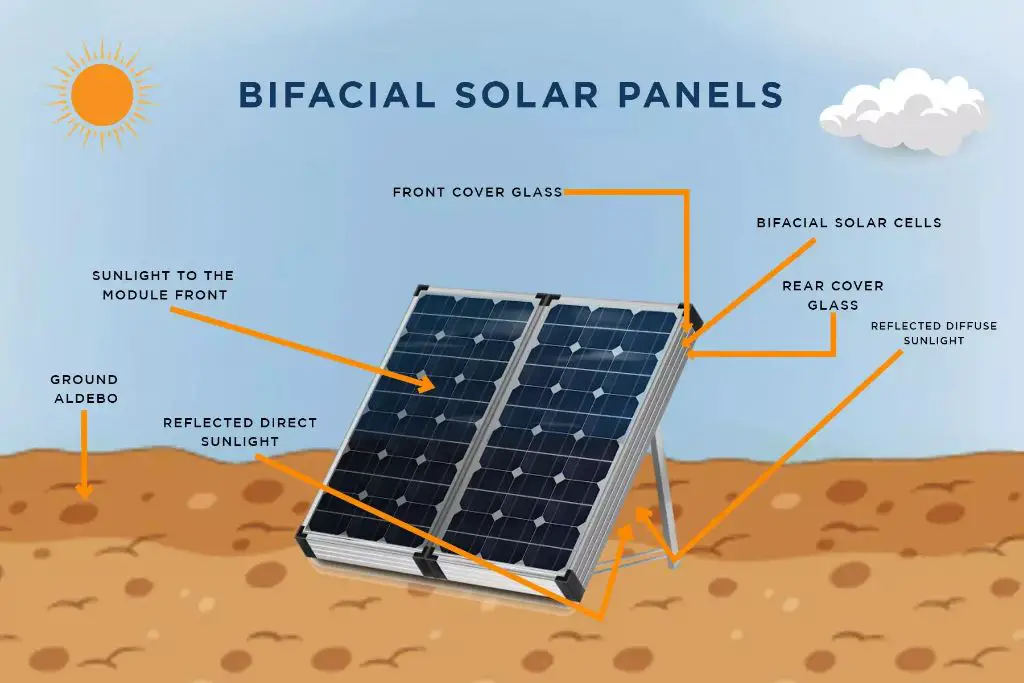
Specifically, bifacial panels work well when there is reflected sunlight or albedo. Albedo refers to the amount of light that gets reflected off surfaces like snow, water, or light-colored rooftops. This reflected light can then be captured by the backside of bifacial panels, further boosting their energy generation. According to this overview, bifacial panels can generate up to 50% more energy in high albedo environments.
In summary, the dual-sided design of bifacial panels allows them to absorb more sunlight overall. This results in key advantages like improved efficiency, increased energy generation from both sides of the panel, and the ability to harness reflected albedo light.
Disadvantages of bifacial panels
While bifacial panels offer efficiency gains, they also come with some drawbacks compared to traditional monofacial panels. One key disadvantage is their higher cost. Bifacial panels utilize advanced materials and design features that increase manufacturing costs. According to Renogy, bifacial panels are around 10-15% more expensive than comparable monofacial panels.
Bifacial panels also require proper backing surfaces to maximize performance. Traditional racking systems or rooftop installations may not be optimized for bifacial gain. To get the full benefit, panels need highly reflective surfaces underneath, which increases material and installation costs. Partial shading can also cause greater power losses with bifacial panels compared to monofacial.
Typical efficiency gains
Bifacial solar panels can generate more electricity than traditional monofacial panels due to their ability to capture light on both sides of the panel. According to research, bifacial modules typically produce 5-25% more power output than monofacial modules with the same rated power (Hwang, 2023).
The exact efficiency gain depends on various factors like albedo (ground reflectivity), tilt angle, row-to-row spacing and climatic conditions. Under optimal conditions, bifacial panels can achieve efficiency gains of up to 30% compared to monofacial panels. However, more typical gains range from 10-15% in real-world installations.
Higher albedo from surfaces like white roofs, sand or snow can significantly boost bifacial production. Proper tilt, row spacing and terrain also help maximize rear-side irradiance. Bifacial performance improves in diffuse light conditions with bright cloud cover or morning/evening hours.
Ideal installation conditions
Bifacial solar panels perform best when they can capture reflected light from surfaces below the panels. According to CNET, the ideal conditions for bifacial panels are rooftops with a white membrane or reflective gravel, as well as ground-mount systems with light-colored gravel or grass below the panels. The panels can gain up to 30% more energy generation from the albedo or reflected light.
Bifacial panels also benefit from being elevated off the mounting structure so light can hit the back side easier. Tilting the panels vertically can further optimize energy production. For residential installs, bifacial panels are well-suited for white rooftops or ground mounts with maximum rear sun exposure.
Module costs comparison
When comparing bifacial and traditional solar panel costs, there are some key differences to consider. Bifacial solar panels tend to cost more upfront than traditional monofacial panels on a dollar per watt ($/W) basis. According to industry sources, bifacial panels currently range from around $0.10 to $0.30 per watt more than comparable monofacial panels (https://www.ecowatch.com/solar/bifacial-solar-panels).
For a typical residential installation, the panel cost premium for going bifacial is estimated to be about 10-15%. So for a 6 kW system using 300W panels, the upgrade from traditional to bifacial panels would add $180-$270 to the module cost (assuming $0.15/W premium for bifacial).
For larger commercial and utility-scale installations, the cost difference tends to be on the lower end, around $0.10 per watt extra for bifacial over monofacial panels. This is because panel costs make up a smaller portion of the overall system cost for large projects.
While bifacial panels carry a higher upfront price tag, the enhanced energy production can lead to a faster return on investment through electricity savings. Overall lifetime value should be evaluated when comparing the costs.
Total system costs
The total system costs for bifacial solar panels tend to be higher compared to traditional monofacial panels. This is mainly driven by the higher module costs of bifacial panels, which can cost anywhere from 10-30% more than comparable monofacial panels (Source).
However, there are also balance of system (BOS) cost differences to consider. Because bifacial panels produce energy from both sides, they require wider panel spacing and elevated mounting structures. This increases costs for mounting hardware, labor for installation, and potentially land or rooftop area required. According to one estimate, the BOS costs for a bifacial system can be 5-15% higher than a comparable monofacial system (Source).
In addition, bifacial systems may require modifications to inverters and wiring to handle the increased power output. Specialized trackers that tilt bifacial panels throughout the day can maximize energy production but also add substantial cost.
When accounting for the higher module and balance of system costs, the total installed price of a bifacial solar system can be 15-30% more than a similarly sized monofacial system.
Payback Period
The payback period refers to the amount of time it takes for the energy savings from solar panels to recover their initial investment cost. For standard monofacial panels, the average payback period is 6-10 years according to This Old House.
Bifacial solar panels often have a higher upfront cost than standard panels, usually 10-15% more. However, they can generate up to 30% more energy due to light capture on both sides of the panel. This means the payback period for bifacial panels is often only 1-2 years longer than monofacial panels despite the higher initial investment. According to a 2022 study, bifacial modules had an energy payback time of just 2.2 years in optimal conditions.
The payback period can vary considerably based on installation location, electricity rates, and incentives or rebates. But in general, the modestly longer payback time for bifacial panels is worthwhile given their additional energy production over the 25+ year lifespan. With rapidly declining solar costs, bifacial technology offers an efficient way to maximize energy yields.
Recent technology improvements
Bifacial technology has improved in recent years, making the modules more viable for widespread use. A key innovation is the development of transparent backsheets that allow sunlight to pass through to the rear of the panel. Traditional solar panel backsheets block light, but transparent backsheets made of materials like clear PET allow bifacial capture.
Manufacturers like LONGi Solar have commercialized transparent backsheet bifacial modules like the Hi-MO 4 bifacial module. These improvements in backsheet technology have helped boost bifacial solar energy production to 15-25% more than monofacial panels.
Other innovations like improved frame designs and optimized microstructure on the rear side have also emerged to maximize rear-side light capture. As technology progresses, efficiencies and cost-effectiveness will continue improving.
Future outlook
The future looks bright for bifacial solar panels. According to Bifacial Solar Market research, the global bifacial solar market is projected to grow at a CAGR of over 15% from 2023 to 2032. Key factors driving growth include supportive government policies, declining costs, and technology improvements. Total installed capacity of bifacial modules is expected to increase from around 5 GW in 2021 to over 60 GW by 2026.
In terms of technology, researchers are working on improving bifacial gain through texture etching, optimized spacing between modules, and integrating bifacial capability into other advanced cell designs like heterojunction and PERC. There is also progress in bifacial module manufacturing techniques to reduce costs. Overall, analysts predict continued strong demand growth as bifacial reaches cost parity with monofacial panels.

